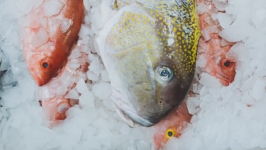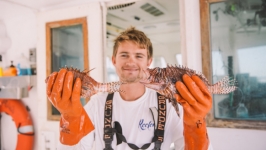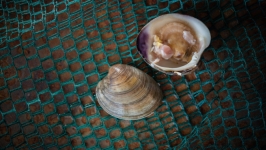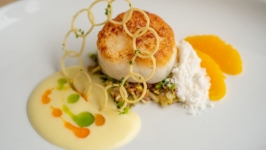Wild-Caught or Farm-Raised Fish: Which is More Sustainable?
According to a recent report by National Oceanic and Atmospheric Administration (NOAA) Fisheries, U.S. consumers ate more fresh and frozen seafood in 2018, about 16 pounds per person, contributing to the highest seafood consumption level seen since 2007. Given the extensive nutritional benefits, many doctors and nutritionists recommend the inclusion of fish as part of our daily diet, which may lead to increased demand in the future. So where will all the fish come from to meet the needs not only of the U.S. but also populations around the world, without putting further strains on our waterways? How do we support a sustainable fish and seafood industry while creating more food for a growing world population?
You might be surprised to learn that, according to NOAA, over 80% of the seafood consumed by Americans is imported and more than half of that is the product of aquaculture (farming freshwater and saltwater fish and other seafood). Over 100 marine and freshwater species are farmed today using methods from traditional earthen ponds to high-tech tank systems. In terms of sustainability of the industry, are farm-raised fish better for the environment than wild-caught? The answer is, that depends.
Aquaculture has been used to farm fish, crustaceans, seaweed and other seafood around the world for thousands of years. However, high-input/high-impact forms, such as shrimp and salmon farming, have given the ancient practice a negative image. Industrial aquaculture has its share of environmental challenges, including nutrient and chemical waste, water use demands, aquatic animal diseases, the incursion of invasive species, effects on endangered or protected species, depletion of small “feeder” fish used to feed farmed fish and effects on protected and sensitive marine areas. Not all fish farming is bad, as it can help reduce the strain on wild stocks. But like any type of agriculture, there are good practices and bad practices which should be taken into consideration before throwing the baby (fish) out with the bathwater.
“Farmed seafood is exactly as every other farmed item in that some of it is more carefully grown, both for flavor and for safety, while some of it is simply produced as cheaply as possible,” says Ben Williams, former owner of Fisherman’s Dock seafood market. “This leaves out the whole question of processing after harvest, something that, depending on what that "processing" involves, which ingredients and which additives are used, can turn something perfectly good into something analogous to any of the other junk foods we eat.”
Williams recommends seeking out the best quality of fish, even if it may cost a bit more. “I'd generally much rather have a good quality Atlantic farm-raised salmon, a large one from a good farm, and then the belly side of it, where the richness from the fat is concentrated.”
Wild-caught seafood is not necessarily more sustainable, as some fishing operations ignore environmental concerns and certain fish species have been overfished. The challenge for consumers comes in knowing the source of the fish. While fish markets and grocery stores are becoming better at labeling the origins of seafood, unfortunately, inconsistent standards mean that labels and certifications don’t always provide transparency. Don’t hesitate to ask where your seafood comes from and how it’s produced, just as you would about agriculture or farming practices on land. Addressing concerns about a sustainable food system starts with knowing where your food supply comes from, whether it’s the land or sea.















